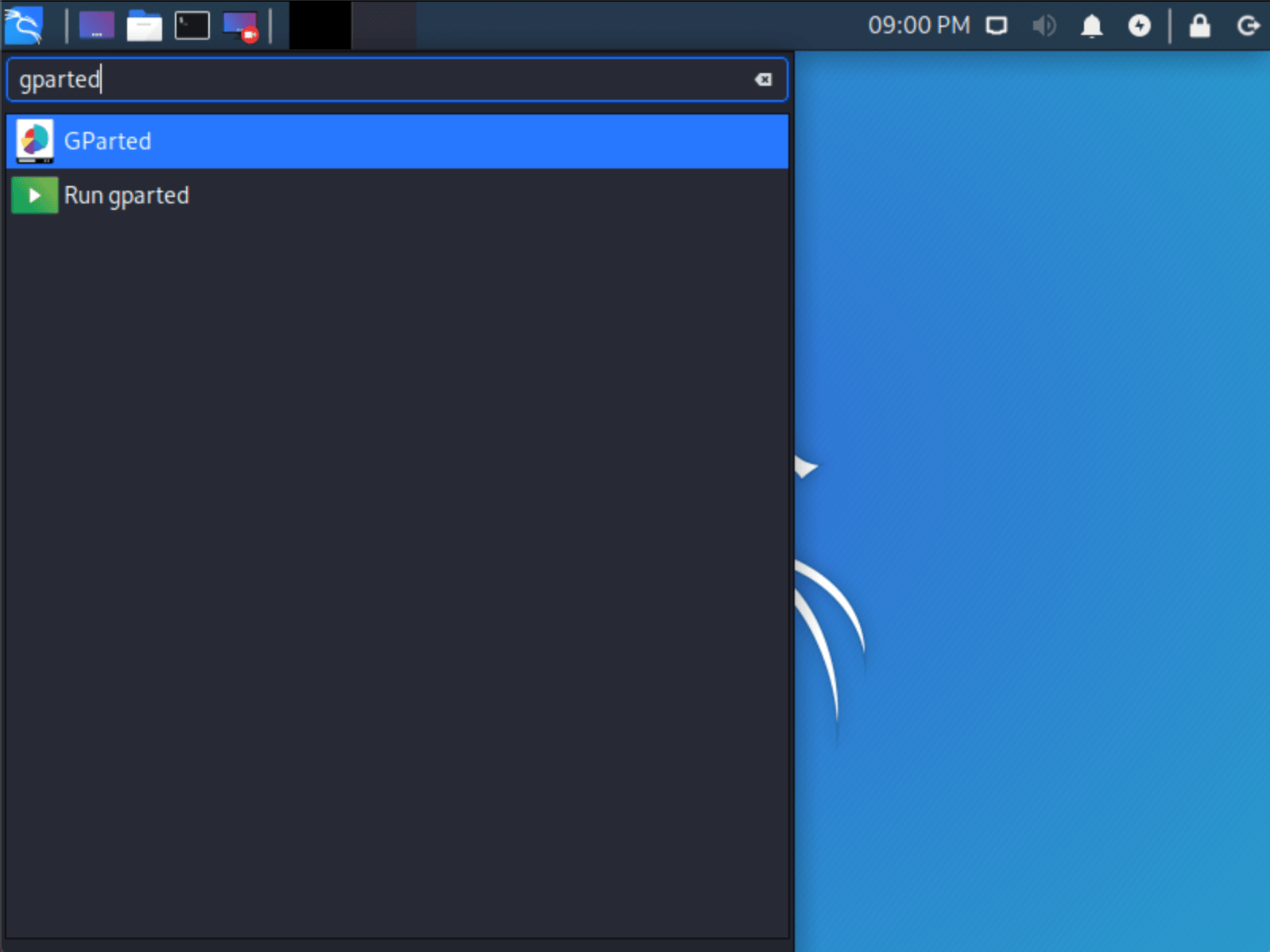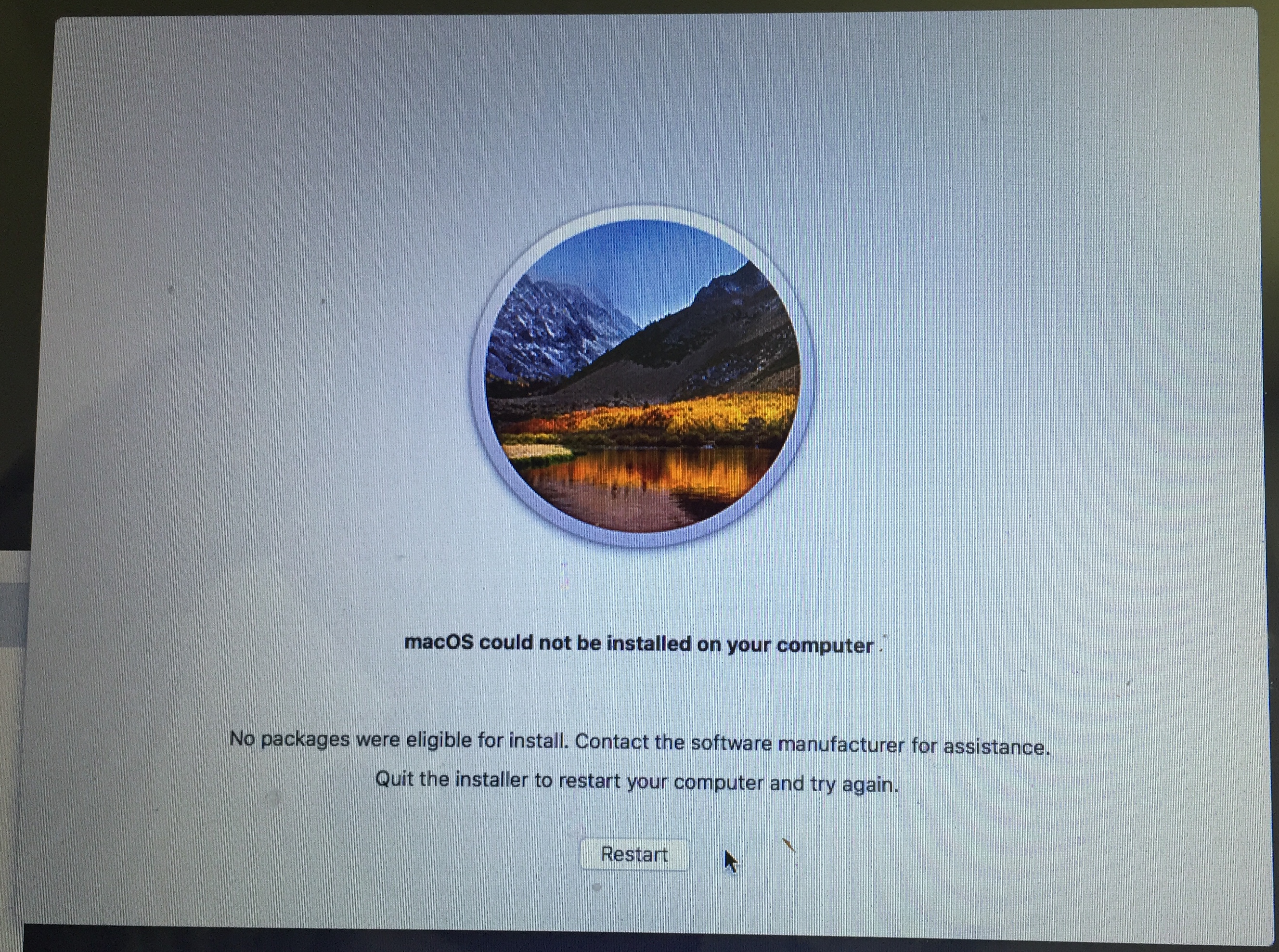- Mac Os Cannot Be Installed
- Os X Could Not Be Installed No Packages
- Os X Could Not Be Installed No Packages Were Eligible
- How Do You Fix No Packages Were Eligible For Install
- How To Fix No Packages Were Eligible For Install
“macOS could not be installed on your computer. The installer resources were not found. Quit the installer to restart your computer and try again.” This happens regardless of whether you’re performing an upgrade or a clean install, and whether the drive you’re installing to is formatted as APFS or HFS+. So, what’s the solution? Was trying to instal el capitan on my macbook, the installation starts and after a few minutes stops and a messaging saying the os x could'nt be install on the computer, please contact the software editor to get help. I called apple and they said they can't give me any tech support, i guess cause my computer is too 'old'.
Dec 16, 2019 Error Message: 'OS X could not be installed on your computer. No packages were eligible for install. Contact the software manufacture for assistance. Quit the installer to restart your computer. Jul 13, 2015 I am trying to install the Public Beta version of El Capitan and after about 10-15 mins of trying to install, a message pops up that says 'no packages were eligible for install' and the installation fails. Here's what I've tried so far: Restarting with command + r: - I do not have a Time. How to fix OS X Installer Failure 'No packages were eligible for install. Contact the software manufacturer for assistance' Posted by Scotton Friday, November 2. 2018 If you ever get this error while attempting to install OS X, you will likely need to set the date using terminal. Everything you need to do to repair your OS X Installation when trying running of USB. “No packages were eligible for install” – Unable to install El Capitan. Nov 04, 2019 - Install an older version of Mac OS X, (if your machine can go up to el capitan, but if it doesnt install elCap, try installing Yosemite, etc.). No packages were eligible for install.
Apr 19, 2020 Using my MBP 16', I used the Download OS X El Capitan link on Apple's support site to get the installer. Unfortunately, running the InstallMacOSX.pkg package in the DMG failed: This version of OS X 10.11 cannot be installed on this computer. I 'found' a Install OS X El Capitan.app package and was able to create the bootable media. Jun 21, 2016 Installing El Capiton on an old Mac Book Pro today, I received the error: OS X could not be installed on your computer. No packages were eligible for install. Contact the software manufacturer for assistance.
UpdatesImportant Notes:
- Using APFS is REQUIRED in Mojave in order to receive system updates via the normal Software Update method. If you choose to continue using macOS Extended (Journaled) as your filesystem type, you will NOT receive System Updates via System Preferences. If you are not using APFS, you can follow the 10.14.1 installation steps below.
- After applying ANY system update via Software Update, re-applying post-install patches using your Mojave Patcher installer volume will most likely be necessary. If you install a software update and the system fails to boot afterwards, this is what needs to be done.
10.14.6
10.14.6 can be updated normally via Software Update if using an APFS volume, and will need to be patched using an installer volume created with Mojave Patcher version 1.3.2 or later after installing. Airdrop for mac os x 10.6 8.
10.14.5
10.14.5 can be updated normally via Software Update if using an APFS volume, and will need to be patched using an installer volume created with Mojave Patcher version 1.3.1 or later after installing.
10.14.4
10.14.4 adds new changes that ARE NOT patchable by the post-install tool of Mojave Patcher v1.2.3 and older! Before updating to 10.14.4, you you will need to use the latest Mojave Patcher version to create a new installer volume, using the 10.14.4 installer app. Then, update to 10.14.4, either by installing via Software Update, or by just using the installer volume you've created to install.
Apple No Packages Were Eligible For Install
Mac Os Cannot Be Installed
10.14.3If you are currently running 10.14.1 or 10.14.2, you can simply use the Software Update pane of System Preferences (if using APFS) to apply the 10.14.3 update. Once the update is installed, you will most likely need to re-apply post-install patches to get the system to boot again. This process is detailed in steps 8 - 10 above. If you are currently running 10.14.0, you'll need to proceed with the 10.14.1 update method described below.

Os X Could Not Be Installed No Packages

Os X Could Not Be Installed No Packages Were Eligible
10.14.2If you are currently running 10.14.1, you can simply use the Software Update pane of System Preferences (if using APFS) to apply the 10.14.2 update. Once the update is installed, you will most likely need to re-apply post-install patches to get the system to boot again. This process is detailed in steps 8 - 10 above. If you are currently running 10.14.0, or are using a non-AFPS volume, you'll need to proceed with the 10.14.1 update method described below.
10.14.1/macOS Extended (Journaled) volumes
How Do You Fix No Packages Were Eligible For Install

How To Fix No Packages Were Eligible For Install
Free antivirus for mac os x 10.7 5. The Mojave 10.14.1 update does NOT install properly on unsupported machines, and could result in an unbootable OS. If you want to install the 10.14.1 update (and are not currently running 10.14.1), perform the following steps:
• Download the latest version of Mojave Patcher
• Download the installer using the Tools menu of Mojave Patcher
• Create a patched USB installer
• Boot from that, and install 10.14.1 onto the volume containing an older release.
• Once done, apply the post-install patches, and you should now be on 10.14.1.